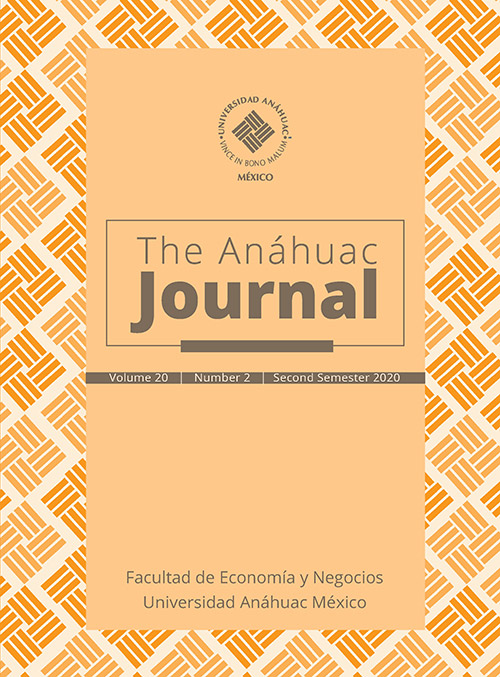Neurosciences applied to the integration of work teams: software development projects
Main Article Content
Abstract
The traditional view of the formation of work teams for the development of software projects has focused fundamentally on two layers: the design of hierarchical pyramids and the layer of technical knowledge, however it has not evolved into the standardization of a more robust practice. Neurosciences applied to the company are being explored more and in greater depth. In this research the relation of thinking styles with software development projects will be analyzed in order to provide knowledge to advance in the reconfiguration of project work teams, considering the most appropriate combination of thinking styles to achieve greater efficiency, efficacy and effectiveness in them. The main objective of this research is to determine if the thinking style of professionals who develop software projects has a significant relation on the results of their projects, as well as to evaluate which of the thinking styles has the greatest effect. Based on the findings of this study, a model of the thinking styles map is proposed to be taken into account in the configuration of software development teams.
Downloads
Article Details
This work is licensed under a Creative Commons Atribución-NoComercial-CompartirIgual 4.0 Internacional.
References
Instrument». En Herrmann, N. (ed.). The creative brain (2ª ed.). EEUU: Quebecor
Printing, apéndice A: 337-379. http://citeseerx.ist.psu.edu/viewdoc/
summary?doi=10.1.1.595.537
Cendejas, J. L., Vega, C. A., Careta, A., Gutiérrez, O. y Ferreira, H. (2015). «Design of
the integrated collaborative model for agile development software in the centralwestern
companies in Mexico». Nova Scientia, 13: 133-148. http://www.scielo.org.
mx/pdf/ns/v7n13/v7n13a8.pdf
Creswell, J. W. y Creswell, J. D. (2017). Research design: qualitative, quantitative and
mixed approaches (5ª ed.). EEUU: Sage.
Cronbach, L. J. (1951). «Coefficient alpha and the internal structure of tests». Psychometrika,
16: 297-334
Dzul E. y Uscanga, I. (4 de octubre de 2016). «El cerebro en el tiempo, recorrido
de la neurociencia». Ciencia y luz, Diario Xalapa. https://www.uv.mx/cienciauv/
files/2016/10/033-CYL-EL-CEREBRO-EN-EL-TIEMPO-01.pdf
Galván, J. (2015). Aprendizaje integral (2ª. ed.). México: Grupo Editorial Tomo.
George, D. y Mallery, P. (2003). A simple guide and reference for SPSS (4ª ed.). Boston:
Allyn & Bacon.
Gisbert, L. M. (2005). Creatividad e innovación en la práctica empresarial. Madrid:
Fundación Cotec para la innovación tecnológica, Estudios, 30.
Goodwin, G. F., Burke, C. S., Wildman, J. L. y Salas, E. (2009). Team effectiveness in
complex organizations: An overview. Londres: Routledge/Taylor & Francis Group.
https://psycnet.apa.org/record/2008-09940-000
Hernández, R., Fernández, C. y Baptista, P. (2010). Metodología de la investigación
(5ª ed.) México: McGraw Hill.
Herrmann, N. y Herrmann-Nehdi, A. (2015). The whole brain business book: unlocking
the power of whole brain thinking in organizations, teams, and individuals (2ª ed.).
México: McGraw-Hill.
HPB (abril de 2019). Brain Partner. Diplomado: Master Brain Partner. México: HPB
Maida, E. G., y Pacienzia, J. (2015). «Metodologías de desarrollo de software» (tesis de
maestría). Buenos Aires: Pontificia universidad católica argentina.
Martín-Rodríguez, J. F. (2004). «La década del cerebro, 1990-2000». Revista Española
de Neuropsicología, 2004: 131-170. https://idus.us.es/handle/11441/51153
NeuroTest (2019). NeuroTest®. https://neurotest.mx
NG España (2014). «Los secretos del cerebro». National Geographic España, 30 de
marzo de 2014, actualizado a 20 de septiembre de 2020. https://www.nationalgeographic.
com.es/ciencia/grandes-reportajes/secretos-del-cerebro-2_8039
OCDE (2009). La comprensión del cerebro. Hacia una nueva ciencia del aprendizaje.
México: Santillana. https://doi.org/10.1787/9789264079816-es
OECD (2018). Oslo manual: Guidelines for collecting, reporting and using data on innovation,
the measurement of scientific, technological and innovation activities (4ª ed.).
París: OECD Publishing.
Pérez, P. W. (2016). «Teorías y modelos que explican el funcionamiento cerebral:
procesos de percepción, memoria y aprendizaje». RUA, Red Universitaria de
Aprendizaje, UNAM, http://depa.fquim.unam.mx/amyd/archivero/funcionamientocerebral_
1117
Project Management Institute (2013). Guía de los fundamentos para la dirección de
proyectos. Guía del PMBOK. (5ª ed.). EEUU: Project Management Institute, Inc.
Rico, R., Alcover, C. M. y Tabernero, C. (2010). «Work team effectiveness, a review
of research over the last decade (1999-2009)», Revista de psicología del trabajo y
de las organizaciones, 26, 1. http://scielo.isciii.es/scielo.php?script=sci_arttext&pid
=S1576-59622010000100004
Rodenes, M. y González, D.L. (2007). «Factores críticos de éxito de la industria del
software y su relación con la orientación estratégica de negocio». Journal of information
systems and technology management, 2007: 47-70. https://www.redalyc.
org/articulo.oa?id=203220233003
Rodríguez, M. y Mora, R. (2001). Estadística informática: casos y ejemplos con el SPSS.
España: Universidad de Alicante.
Rojas, G., Salas, R. y Jiménez, C. (2006). «Estilos de aprendizaje y estilos de pensamiento
entre estudiantes universitarios». Estudios Pedagógicos, 1: 49-75.
Sánchez, C.E. (2016). «Historia de la neurociencia: el conocimiento del cerebro y
la mente desde una perspectiva interdisciplinar». Ideas y valores, vol. 65 (160):
266-277. https://doi.org/10.15446/ideasyvalores.v65n160.53729
SCRUMstudy (2017). A Guide to the Scrum body of knowledge, SBOK Guide, (3ª ed.).
EEUU: SCRUMstudy.
Sternberg, R. J. (1999). Estilos de pensamiento, claves para identificar nuestro modo de
pensar y enriquecer nuestra capacidad de reflexión. Barcelona: Paidós.
Woodruff, D. y Wu, Y. (2012). «Statistical considerations in choosing a test reliability
coefficient». ACT Research Report Series, 10: 1-35.
Zeroo, B. (2008). «Metodologías para la gestión y desarrollo de software». (s.p.i.)
https://es.scribd.com/doc/8255409/Metodologias-para-la-geston-y-desarrollode-
Software

